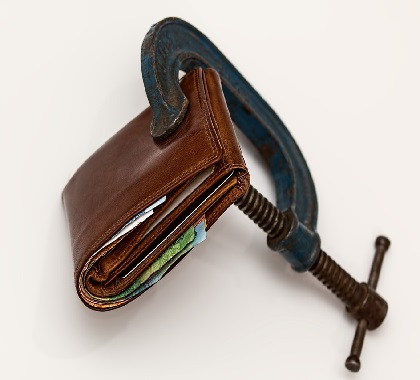Kansans’ wallets are lighter than usual today, with the legislature having raised the state’s income tax rates across the board in July, reversing several years of tax relief led by Gov. Sam Brownback between 2012 and 2017.
Brownback vetoed Senate Bill 30 on June 6, but the legislature overrode the veto on the same day, enacting the bill into law and staving off a projected $900 million budget deficit for Fiscal Year 2018.
Beginning July 1, joint filers with annual income above $60,000 and single individuals earning more than $30,000 began paying a top income tax rate of 5.2 percent for 2017 earnings, instead of the previous 4.6 percent.
Earners in the bottom two brackets now pay 2.9 percent and 4.9 percent, respectively, and will pay a 3.1 percent and 5.25 percent in 2018.
The tax hike also includes the removal of tax exemptions for business owners and farmers, increasing their liabilities, too.
The tax hike is retroactive. Kansas taxpayers will owe back taxes for income earned between January 1 and June 30 of this year.
Lack of Spending Control
Jonathan Williams, chief economist for the American Legislative Exchange Council, says the cause of the budget deficit was too much spending, not too much tax relief.
“While the tax cuts in Kansas were far from a failure and in fact aided the state’s economy, many free-spending politicians created a budget failure with the unwillingness to match the tax cuts with meaningful spending control,” Williams said. “In short, at the state level, you cannot cut taxes without keeping an eye on the spending side of the ledger.
‘Serious Negative Effects’
Dave Trabert, president of the Kansas Policy Institute, says the tax hike places a heavy burden on Kansans.
“The tax increase will have serious negative effects on citizens,” Trabert said. “About 300,000 low-income Kansans who had been exempt from the state income tax will now have to pay taxes, and everyone else will endure a double-digit increase by next year.
“Collectively, this takes about $600 million per year out of the economy and makes less money available to buy food and clothing,” Trabert said. “Employers will have less money available for pay increases and business investment.”


